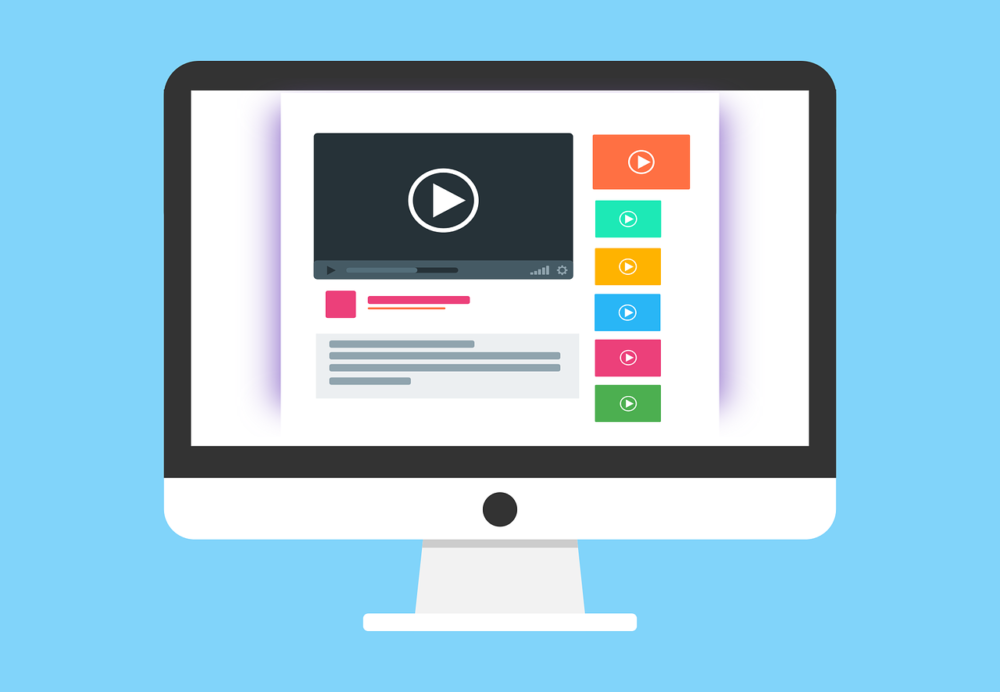Hello!
Companies with blogs get 55 percent more website visitors, 97 percent more inbound links, and 434 percent more indexed pages on search engines, according to a Hubspot study. If you haven’t added a blog to your business website yet, you should because your business can gain so much from it.
That said, creating a valuable and effective business blog is an art form. There’s a lot involved in bringing it to life, including developing a blog strategy, studying your target audience, and crafting high-quality posts.
This guide will walk you through how to create a business blog that gets results and has a real impact on your company.
Study Your Target Audience
 You must understand your target audience before you do anything with your blog. Your posts are for them. So, you need to make sure you’re creating what they need and are interested in.
You must understand your target audience before you do anything with your blog. Your posts are for them. So, you need to make sure you’re creating what they need and are interested in.
Writing blog posts that people actually read starts with understanding who you want to engage with your content. In other words, who are your readers? Go way beyond demographic data, like their marital status and education level.
Dig into their interests. Find out what their lifestyle is like and what they do for fun. Identifying their interests helps you figure out which blog topics they might be interested in. People flock to content that assists them in pursuing their interests. If you can provide such content, it’ll only help the results you get from your blog.
You should also delve into their pain points. What struggles or challenges are they going through right now? How can your business’ product or service help?
Answering these two questions also helps you choose the most relevant, valuable topics for your particular audience. They’ll be searching for solutions to their problems. So, having posts available that provide those solutions will maximize your blog’s impact.
 Round up all of your data sources to find this information, such as:
Round up all of your data sources to find this information, such as:
- Your website analytics;
- Any market research you’ve conducted;
- The analytics tools built into your social media platforms;
- Information you’ve learned from forums, groups, and comments on social media.
Then, document relevant insights like those mentioned above. Also, you should look at what type of content your audience prefers and any data that will help you create the best blog posts for your audience.
For instance, consider topics your audience enjoys on your other digital marketing channels, media types that get the most engagement on social media or calls to action that have gotten the most engagement.
With a good grasp of who your target audience is, you can step into the blog creation process confidently.
Also read: How Enhanced Security Can Boost Your Digital Marketing Strategies
Define Goals For Your Blog
 You want your blog to generate results. But what exactly does that mean? You need to specify the goals you have for your blog to ensure your efforts go to what will help you achieve your desired objectives.
You want your blog to generate results. But what exactly does that mean? You need to specify the goals you have for your blog to ensure your efforts go to what will help you achieve your desired objectives.
For example, if your goal is to get more organic traffic to your website, you can put together an actionable plan for achieving this goal that includes crafting high-quality content and optimizing it for search engines.
Using the SMART goal framework is a wise choice for your goals. It ensures they’re Specific, Measurable, Achievable, Relevant, and Time-bound.
Don’t overwhelm yourself with a bunch of goals. Instead, choose one to three that make sense for your blog and align with your bigger business goals.
Create a Blog Strategy
A blog strategy helps you solidify the overall vision that you have for your blog.
 Along with your goals, you’ll include information on:
Along with your goals, you’ll include information on:
- What your niche is;
- Who your competitors are;
- Who your target audience is;
- How often you’ll publish new posts;
- How you’ll track your blog’s performance;
- Potential keywords and phrases you’ll use;
- Potential topics you’ll cover and visuals you’ll use;
- Who’s involved in creating and maintaining your blog.
Put all of this information into a polished document so that you can refer to it whenever you need to during the development of your blog.
Set Up Your Blogging Tools and Software
The tools and software you use to set up and maintain your blog are integral to its success.
You need to be able to create content, track the performance of your content, and make adjustments with ease. This can only happen if you have the right tech infrastructure to rely on.
 At the very least, you need these tools to design a high-impact business blog:
At the very least, you need these tools to design a high-impact business blog:
- A host platform to store your blog and make it accessible online;
- A content management system (CMS) to help you create and deliver digital content;
- Search engine optimization (SEO) tools to help you conduct keyword research and other SEO-related tasks to improve visibility on search engines;
- Image and video libraries so you can access a repository of stock images and videos that you can use for free in your blog;
- Editing software to automatically edit your posts for grammar and punctuation issues;
- Data analytics solutions to collect and process data on your content’s performance.
Go through your tech suite and ensure each tool and software is set up correctly. Train yourself and your team on everything before you get deep into developing your blog to ensure you can confidently navigate the tools and software.
Craft Blog Content Your Audience Will Engage With
 Crafting compelling and insightful blog posts is the fun part. But it’s also the most detailed, time-consuming part. You can’t just publish any old content and expect it to get results.
Crafting compelling and insightful blog posts is the fun part. But it’s also the most detailed, time-consuming part. You can’t just publish any old content and expect it to get results.
Instead, your content must be relevant, valuable, helpful, and engaging, and made for your unique target audience. Rather than be sales-focused and all about your business, it needs to be all about helping the reader live better in some way.
Creating better content for your company blog starts with ensuring an exceptional user experience.
What you write doesn’t matter if people can’t get to your content or have a hard time getting through it.
Some ways to improve your user experience include:
- Using a simple design for your blog;
- Removing excessive banners, ads, and widgets to reduce clutter and improve loading speed;
- Make sure your pages have the essential features, like a search box and related posts at the bottom.
A reader-friendly format is also essential to ensure your blog posts are digestible and easy to understand:
- Use a readable font size;
- Use white space to break up text;
- Use short paragraphs, bulleted lists, and subheadings;
- Use text colors that contrast with the main page background.
Once you tackle the user experience details, dive into the rest of these tips for crafting blog posts your audience will love and engage with.
Attach a Goal to Each Blog Post
The goals you attach to each blog post are just as important as the overall goals you established for your blog above. Each post must have a purpose if you want to get real results from it.
 Your post goals don’t have to be super detailed. However, they do need to be clear and realistic. For example, your goal for a post about a new product launch could be to drive traffic to that particular product page.
Your post goals don’t have to be super detailed. However, they do need to be clear and realistic. For example, your goal for a post about a new product launch could be to drive traffic to that particular product page.
Or, your goal for a post about customer pain points could be to increase brand awareness.
Attach a goal to your blog post before you start creating it so that you’re writing with intention.
Make an Outline
You could write the post off the top of your head. Or, you could respect your time and effort and create an outline for the post.
An outline helps you organize your thoughts before you start writing, helping you avoid writer’s block. It also ensures your post is structured logically, flows well, and you don’t miss any main points.
 Your blog post outline should detail:
Your blog post outline should detail:
- Potential headlines;
- What the topic is;
- Your post’s format;
- What the main angle or argument is;
- How many sections you’ll have and what you’ll cover in each;
- Your introduction and conclusion;
- When it will be published.
Your outline will keep your post organized and make the actual writing process a lot easier.
Use an Attention-Grabbing Title
The title of your blog post is one of the most important aspects of it. People click on and read blog posts because of their titles. But the key is ensuring they’re interesting and attention-grabbing. If they aren’t, people will be more likely to scroll past them.
 A short and specific title that offers a solution or piques curiosity is the best way to go. It should also be relevant to what you’re covering in your post.
A short and specific title that offers a solution or piques curiosity is the best way to go. It should also be relevant to what you’re covering in your post.
For instance, let’s say you’re writing a blog post about how to get high-paying clients. An attention-grabbing title might be, “3 Things Killing Your Ability to Secure Clients That Pay Big Money.”
There’s nothing wrong with waiting until you finish your blog post to finalize your title. With this approach, you have a better understanding of what you’ve written about and can flesh out a title that best fits it.
Get Your Readers to Buy In With a Solid Introduction
The title of your blog draws readers in. Your introduction is what hooks them and convinces them to read your entire post.
 Start with an interesting first sentence that piques the reader’s interest. It could be a question. It could be a mind-blowing statistic. It could be a controversial statement or you taking a stand on something significant. Whatever it is, the sentence should make the person want to read the next one.
Start with an interesting first sentence that piques the reader’s interest. It could be a question. It could be a mind-blowing statistic. It could be a controversial statement or you taking a stand on something significant. Whatever it is, the sentence should make the person want to read the next one.
Then, you want to move into what your post will be about. Touch on what the subject is and why readers need to know about it.
The last sentence of your introduction should help people transition into the meat of your blog post.
Provide Value in the Rest of Your Post
The rest of your post should cover your main topic in an engaging way and provide exceptional value to your readers. Make sure that the structure and flow of your article are intact first. After that, you can start writing.
Consider telling a story to keep people engaged. For example, let’s say you’re writing about ways to stay motivated when everything is going wrong. Introduce a story about a time in your life when it happened to you – when things felt like they were falling apart.
Then, incorporate what helped you stay motivated during this time and detail how people can do it themselves.
It’s all about providing value in your post and inspiring an emotional connection with your content. These two things alone will convince someone to read your post from start to finish and come back for more.
Include Relevant, Strong Links
 The links you use in your post play a significant role in ensuring your content is optimized to boost organic traffic to your blog.
The links you use in your post play a significant role in ensuring your content is optimized to boost organic traffic to your blog.
You want to encourage people to click on links and explore them, especially if they connect to other pages on your website.
The key is placing links strategically throughout your post. Filling your post with links will make it hard to read. It’ll also lessen the chance of people clicking on the links because they don’t stand out.
Instead, choose an appropriate amount of links for the length of the post. For example, four to five links in an 800-word post is appropriate. Twenty links aren’t. Make sure your links are relevant to the post’s topic.
Finally, use anchor text that will make people click on the link. Stay away from “click here,” and use a short three to five -word sentence to describe what the link is about.
Learn From Your Content’s Performance
 Once you publish your post, things start to happen. People start to visit the page, engage with the content, and share it. Or, they may choose not to. Either way, it’s essential to pay attention to each blog post’s performance.
Once you publish your post, things start to happen. People start to visit the page, engage with the content, and share it. Or, they may choose not to. Either way, it’s essential to pay attention to each blog post’s performance.
If you don’t keep up with your content’s performance, you won’t know what’s getting you results. So, instead of spending your time and effort on what’s working, you’ll end up spending it on what isn’t. With that comes no results and frustration.
Conversely, if you track each post’s performance, you can pinpoint which posts are getting the most engagement and make conclusions about why.
From there, you can incorporate what you did in the posts that got results in future posts, bettering your chances of consistent engagement and conversions.
 Here are a few types of data to track to gauge the performance of your blog content:
Here are a few types of data to track to gauge the performance of your blog content:
- Page views tell you if people are finding your content and if it’s popular.
- The average time on a page tells you how long someone spends on a blog post page, which could be an indicator of its quality.
- Social shares tell you how many times the content is shared on social media, giving you insight into whether the content is resonating with your target audience.
Check your data regularly. Then, create an actionable plan for how you’ll move forward after every session.
Also read:
- How Solar can Grow your Business
- Cable vs. Satellite TV: Which One to Choose?
- What is Link Building and How to Start Link Building?
Conclusion
 A high-impact business blog can elevate your company’s marketing strategy. With quality blog posts, you can connect with more of your target audience, generate consistent organic traffic to your site, and incite conversations – and conversions.
A high-impact business blog can elevate your company’s marketing strategy. With quality blog posts, you can connect with more of your target audience, generate consistent organic traffic to your site, and incite conversations – and conversions.
Rely on the advice in this guide to build a company blog that keeps your audience coming back, or contact Sevenatoms – a content marketing agency that will create an impactful blog for your business.
Thank you!
Join us on social media!
See you!






